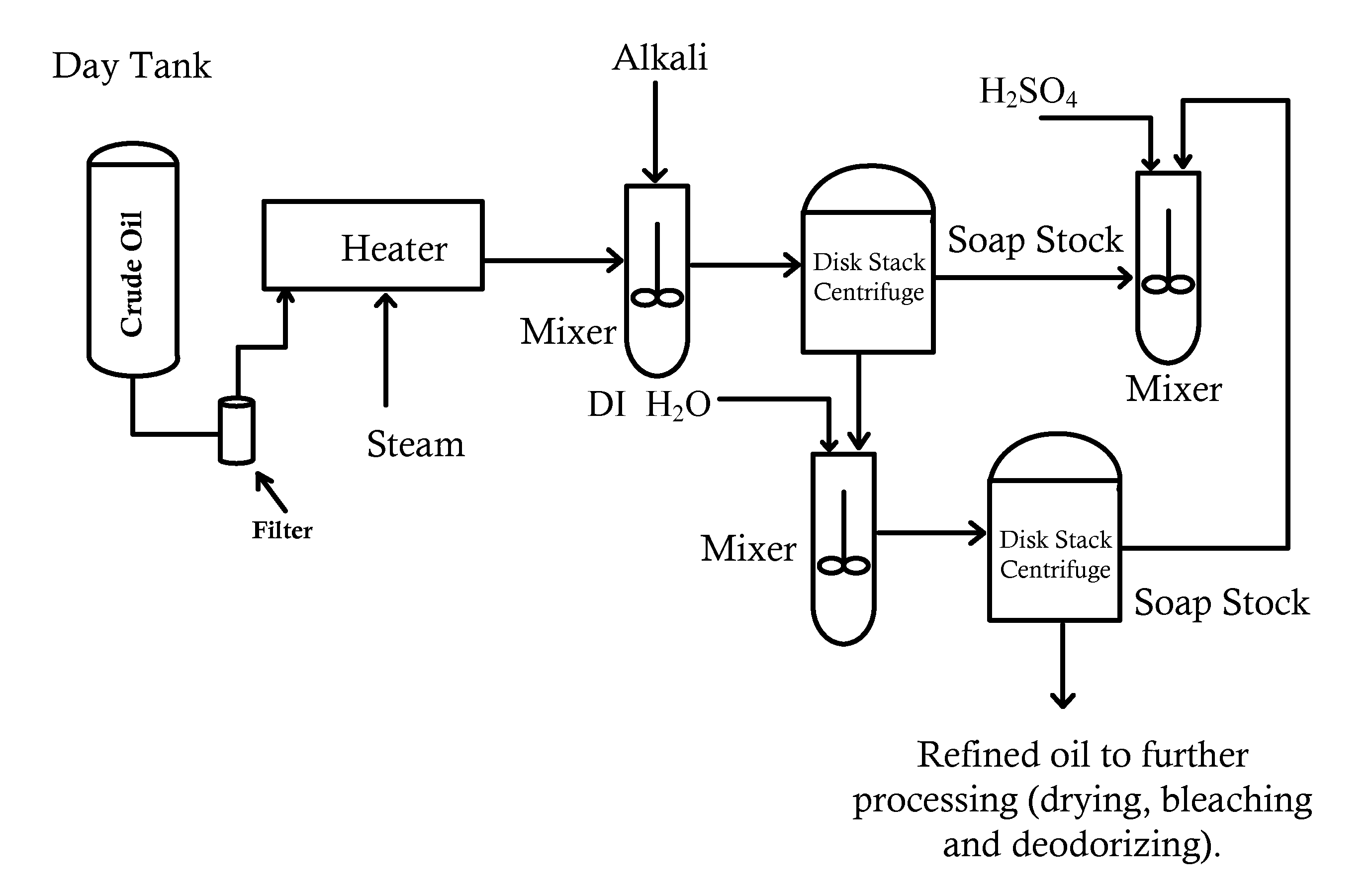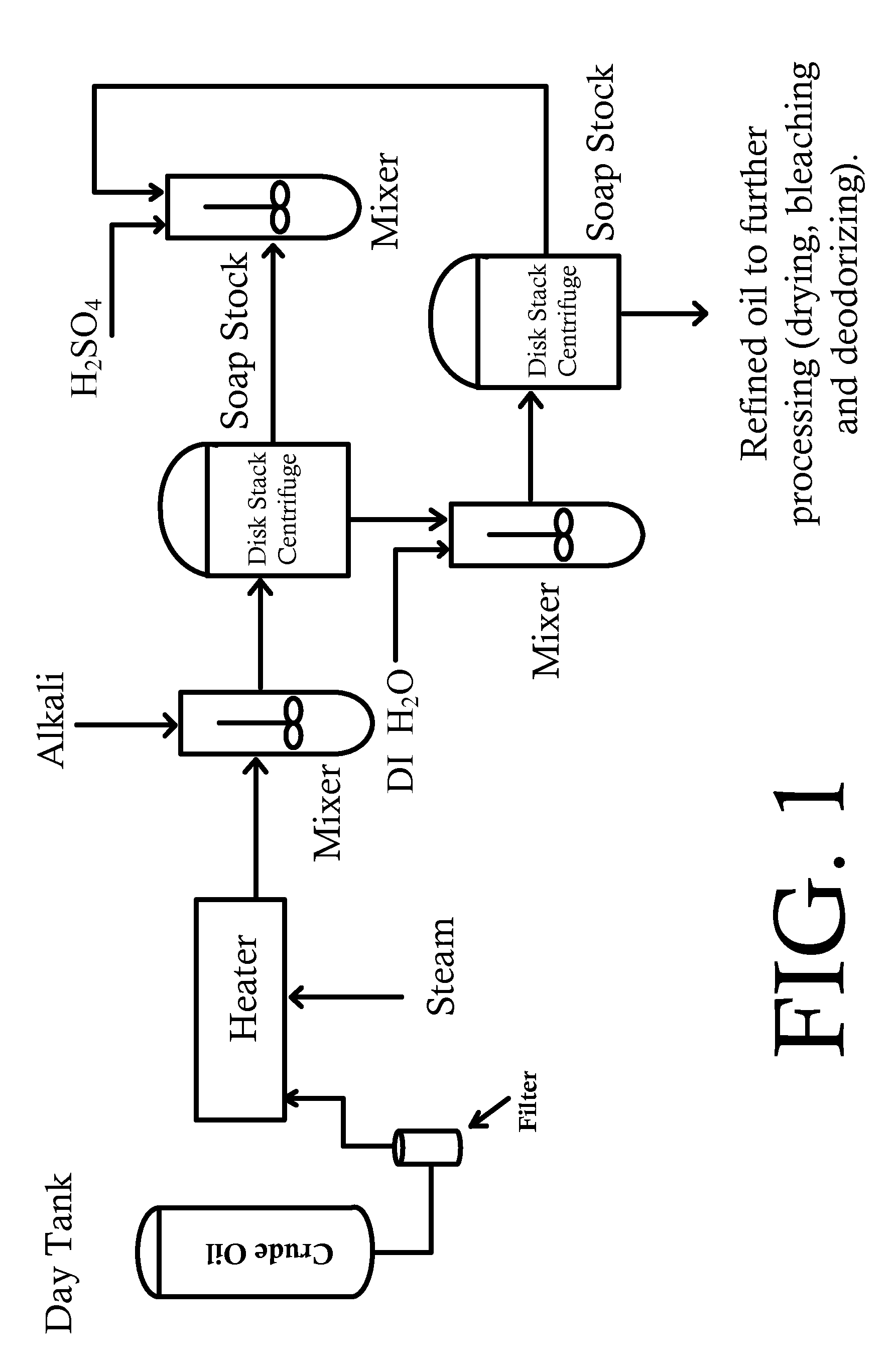Refining of edible oil
a technology of edible oil and refining process, which is applied in the direction of fatty oil/fats refining, fatty oil/acid recovery from waste, fatty oil/fat separation, etc., can solve the problems of multiple steps, oil coloration or unpleasant odor, and energy and equipment consumption, so as to achieve complete separation of the layer, prevent intermixing, and maximize process effectiveness and efficiency
- Summary
- Abstract
- Description
- Claims
- Application Information
AI Technical Summary
Benefits of technology
Problems solved by technology
Method used
Image
Examples
example 1
Sodium Hydroxide Mixing Conditions
[0037]Concentration of sodium hydroxide: 25%[0038]Amount added: 10 mls (about 0.8% by weight of the crude oil sample)[0039]Mixing temperature: 30° C.[0040]Mixing time: 22 minutes
Polymer Addition and Mixing
[0041]Polymer: Polydimethylamine-epichlorohydrin[0042]Amount added: 10 ppm by weight of the crude cottonseed oil[0043]Mixing temperature: 50° C.[0044]Mixing time: 8 minutes
example 2
Sodium Hydroxide Mixing Conditions
[0045]Concentration of sodium hydroxide: 25%[0046]Amount added: 8 mls (about 0.7% by weight of the crude oil sample)[0047]Mixing temperature: 35° C.[0048]Mixing time: 20 minutes
Polymer Addition and Mixing
[0049]Polymer: poly-diallyldimethyl-ammonium chloride[0050]Amount added: 10 ppm by weight of the crude cottonseed oil[0051]Mixing temperature: 50° C.[0052]Mixing time: 8 minutes
example 3
[0053]Sodium hydroxide mixing conditions[0054]Concentration of sodium hydroxide: 25%[0055]Amount added: 14 mls (about 1.2% by weight of the crude oil sample)[0056]Mixing temperature: 35° C.[0057]Mixing time: 20 minutes
Polymer Addition and Mixing
[0058]Polymer: 1:1 mixture of Polydimethylamine-epichlorohydrin and poly-diallyldimethyl-ammonium chloride[0059]Amount added: 10 ppm of each polymer by weight of the crude cottonseed oil[0060]Mixing temperature: 50° C.[0061]Mixing time: 8 minutes
PUM
 Login to View More
Login to View More Abstract
Description
Claims
Application Information
 Login to View More
Login to View More - R&D
- Intellectual Property
- Life Sciences
- Materials
- Tech Scout
- Unparalleled Data Quality
- Higher Quality Content
- 60% Fewer Hallucinations
Browse by: Latest US Patents, China's latest patents, Technical Efficacy Thesaurus, Application Domain, Technology Topic, Popular Technical Reports.
© 2025 PatSnap. All rights reserved.Legal|Privacy policy|Modern Slavery Act Transparency Statement|Sitemap|About US| Contact US: help@patsnap.com



